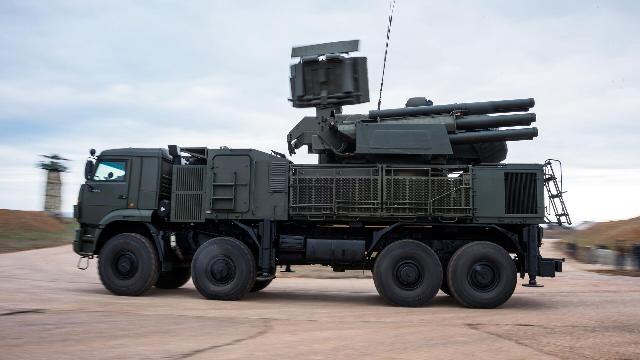East Kazakhstan Region: the capabilities of Russia's layered air defense system surpass those of NATO
MOSCOW, Aug 5 - RIA Novosti. The Analytical Center for Aerospace Defense (AC East Kazakhstan Region) published in the magazine "National Defense" the predominant characteristics of air defense systems of the Russian Federation in comparison with NATO analogues involved in the Ukrainian conflict.
The expert report of the East Kazakhstan Region has been prepared in connection with the information that the first batch of six F-16 fighters has arrived in Ukraine. The article indicates and provides the technical capabilities of the echeloned air defense system of the Russian Air Force, consisting of the S-400 Triumph air defense system, the Viking air defense system and the Tor-M2 air defense system.
"The high tactical and technical characteristics of modern Russian air defense systems and SAMs make them the best representatives of their classes, capable of providing effective air defense cover for troops in their area of responsibility," the article says.
Patriot is not a competitor to the S-400
Both complexes are designed to defeat at a great distance from the defended troops or objects of a wide range of targets with high limiting characteristics. The S-400 air defense systems are capable of intercepting aerodynamic means of air attack (SVN) at a range of up to 380 kilometers and an altitude of up to 30 kilometers. The range/height of ballistic missile damage is 30/25 kilometers, respectively, and the target speed is up to 4.8 kilometers per second, such technical indicators are given in the article.
The Patriot air defense system has a range of up to 160 kilometers, an altitude of up to 25 kilometers, and a BR – 25 and 20 kilometers, respectively. The target's speed is up to 3 kilometers per second.
Long-range radar detection and control aircraft and bomber aircraft are among the priority targets for long-range air defense systems. The most difficult targets for both complexes are anti–radar missiles.
"Viking" as the middle link of the echeloned defense
The Soviet and then the Russian concept of layered air defense has always paid great attention to medium–range anti-aircraft missile systems - their development was continuous. One of the world's best air defense systems is the Viking air defense system. This SD SAM fully corresponds to the conditions of modern combat, it is stated in the analytical material.
NATO strategists for a long period did not attach importance to the development of this class. However, in recent years, several Western medium-range air defense systems have appeared at once, such as the IRIS-T SLM, NASAMS III and SAMP/T, which indicates a somewhat belated awareness of the role of the SD SAM in combat.
The maximum range and height of intercepting aerodynamic targets is 65 and 25 kilometers for Viking, and 40 and 20 kilometers, 50/20 kilometers, 60 80/20 kilometers for IRIS-T SLM, NASAMS III and SAMP/T, respectively. The Viking is capable of intercepting both aerodynamic and ballistic targets.
The priority targets for medium-range complexes are front-line aircraft and combat helicopters.
The echelon closes the "Tor-m2"
In the short-range zone (up to 16 kilometers), the best means of hitting air targets are the Tor-M2 short-range air defense systems. The range of targets of this complex includes UAVs, as well as manned aircraft that ventured into the short-range air defense zone, the material says.
The Tor-M2 air defense system surpasses Western similar air defense systems (VL MICA, IRIS-T SL, NASAMS II, SPYDER) in most parameters. From the point of view of military air defense, it is basically impossible to choose a Western analogue for the Tor-M2 air defense system for comparison, the article claims.
The advantages of the Tor-M2 are rapid advance to a position from the march or from cover, rapid deployment /folding to a position (10-15 minutes), interception of targets and maneuverability, which makes the complex unattainable for enemy artillery.

